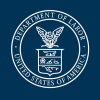
Inflation in the world
The Organisation for Economic Co-operation and Development (OECD), which has 36 member countries including the US, Canada, the UK and Germany, reported a rise in inflation to 3.3% in April, the fastest rate since October 2008. The main reason was attributed to a jump in energy prices, especially in the US and Canada.
US stock market has been showing rather mixed dynamics since the beginning of May as investors are weighing up inflation risks amid economic recovery and mass vaccination against COVID-19.
During the last month S&P 500 index has grown by 0,3% and Nasdaq Composite by 0,05%, the volatility level in the market still remains rather high.
This week the Organisation for Economic Co-operation and Development (OECD) reported that inflation in OECD countries rose to 3.3% in April 2021, up from 2.4% in March. The reason was given for the sharp rise in energy prices by 16.3% in April, the highest since September 2008, compared with 7.4% in March. Meanwhile, food price inflation slowed to 1.6% from 2.7% in March. The Paris-based organisation reported that even with the exception of food and energy, which tend to be more volatile, global prices rose sharply, rising 2.4% in April from 1.8% in March.
Concerns in the markets began to escalate after the Biden government in the US allocated $1.9 trillion to help the economy with the pandemic and announced plans to allocate another $2 trillion for a long-term plan to invest in infrastructure and create millions of jobs.
Many investors fear that with the Fed's zero interest rates, rising US government debt and budget deficits, prices could rise strongly. The US Fed governor tried to reassure that inflation in these conditions was predictable, temporary and fully under the control of the central bank.
The US labour market is also gradually recovering, albeit at a much slower pace than analysts expect.
The US Department of Labor data on new non-farm payrolls in May rose to 559,000, 278,000 in April, but was below market forecasts of 650,000. This helped the national unemployment rate drop to 5.8% from 6.1% in April. The number of jobless claims in the US has fallen for the last six weeks in a row.








